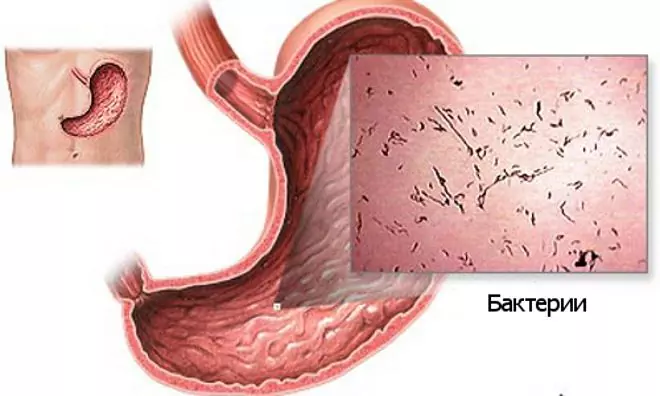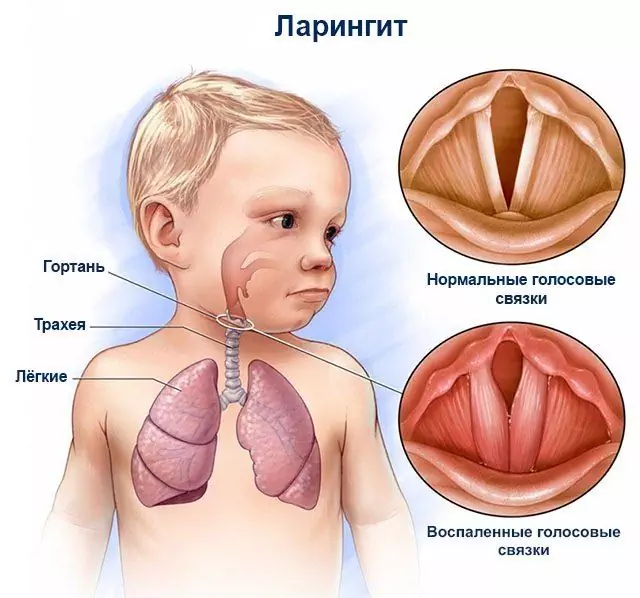- Author Rachel Wainwright [email protected].
- Public 2023-12-15 07:39.
- Last modified 2025-11-02 20:14.
Amikacin
Amikacin: instructions for use and reviews
- 1. Release form and composition
- 2. Pharmacological properties
- 3. Indications for use
- 4. Contraindications
- 5. Method of application and dosage
- 6. Side effects
- 7. Overdose
- 8. Special instructions
- 9. Application during pregnancy and lactation
- 10. Use in childhood
- 11. In case of impaired renal function
- 12. Use in the elderly
- 13. Drug interactions
- 14. Analogs
- 15. Terms and conditions of storage
- 16. Terms of dispensing from pharmacies
- 17. Reviews
- 18. Price in pharmacies
Latin name: Amikacin
ATX code: J01GB06
Active ingredient: amikacin (Amikacin)
Manufacturer: Krasfarma, JSC (Russia); Pharmasintez, JSC (Russia); Sintez, JSC (Russia); Biochemist, JSC (Russia); R-Pharm, JSC (Russia); Shijiazhuang Pharmaceutical Group Oui Co. (Shijiazhuang Pharmaceutical Group Ouyi Co.) (China)
Description and photo updated: 2019-27-08
Prices in pharmacies: from 39 rubles.
Buy

Amikacin is an antibacterial agent from the aminoglycoside group.
Release form and composition
The antibiotic Amikacin is produced in the form of a powder and a ready-made solution for intramuscular and intravenous administration.
The drug solution is available in 4 ml glass ampoules. The contoured cell packaging contains 5 or 10 ampoules of the product. One carton pack contains 1 or 2 packages.
Powder for solution preparation is available in 10 ml vials. One carton pack contains 1, 5 or 10 bottles.
Each pack also contains instructions for the use of Amikacin.
The active ingredient in the composition of the drug is amikacin in the form of sulfate (1 ml - 250 mg).
Auxiliary components are: sodium disulfite, sodium citrate for injection, water for injection, diluted sulfuric acid.
Pharmacological properties
Pharmacodynamics
Amikacin is a semi-synthetic broad-spectrum antibiotic, belongs to the group of aminoglycosides, acts bactericidal. It binds to the 30S subunit of ribosomes, which prevents the formation of a complex of messenger and transport RNA (ribonucleic acid). It also blocks protein synthesis and destroys the cytoplasmic membranes of bacteria.
Shows high activity against the following microorganisms:
- aerobic gram-negative: Enterobacter spp., Escherichia coli, Pseudomonas aeruginosa, Serratia spp., Klebsiella spp., Providencia spp., Salmonella spp., Shigella spp.;
- some gram-positive: Staphylococcus spp. (including strains resistant to penicillin and some cephalosporins).
With regard to Streptococcus spp. amikacin is moderately active.
When combined with benzylpenicillin, it exhibits synergistic action against strains of Enterococcus faecalis.
Anaerobic microorganisms are resistant to the effects of amikacin.
The substance, under the action of enzymes that inactivate other aminoglycosides, does not lose activity and may remain active against Pseudomonas aeruginosa strains resistant to tobramycin, netilmicin and gentamicin.
Pharmacokinetics
After intramuscular injection of injections, amikacin is absorbed completely and quickly. C max (maximum concentration) in blood plasma after intramuscular administration of a dose of 7.5 mg / kg is 21 μg / ml, after intravenous infusion for 30 minutes of the same dose - 38 μg / ml. T max (time to reach maximum concentration) after intramuscular administration is approximately 1.5 hours.
The average therapeutic concentration is maintained for 10-12 hours.
The substance binds to plasma proteins at a level of 4-11%. V d (volume of distribution) depending on age: adults - 0.26 l / kg, children - from 0.2 to 0.4 l / kg, newborns under one week old and with a body weight less and more than 1500 g - up to 0.68 and 0.58 l / kg, respectively. In patients with cystic fibrosis, the indicator value ranges from 0.3 to 0.39 l / kg.
Amikacin is well distributed in the extracellular fluid (contents of abscesses, pleural effusion, synovial, ascitic, pericardial, peritoneal and lymphatic fluids). In urine, it is found in high concentrations, low concentrations are noted in breast milk, bile, bronchial secretions, aqueous humor of the eye, cerebrospinal fluid and sputum.
It penetrates well into all tissues of the body, where intracellular accumulation occurs. High concentrations of the substance are noted in organs with good blood supply - lungs, liver, myocardium, spleen, and especially in the kidneys, where amikacin accumulates in the cortical substance, lower concentrations - in bones, adipose tissue and muscles.
In the case of administration in medium therapeutic doses (normal) for adults, amikacin does not penetrate the blood-brain barrier, and with inflammation of the meninges, permeability slightly increases. In newborns, in comparison with adults, higher concentrations in the cerebrospinal fluid are achieved. The substance crosses the placental barrier and is found in the amniotic fluid and fetal blood.
Amikacin is not metabolized.
T 1/2 (half-life) in adults is 2-4 hours, in newborns - from 5 to 8 hours, in older children - from 2.5 to 4 hours. The final T 1/2 is more than 100 hours (release from intracellular depots).
Excretion is carried out by the kidneys by glomerular filtration (65-94%), mainly unchanged. Renal clearance is 79-100 ml / min.
With impaired renal function, T 1/2 in adults varies depending on the degree of impairment - up to 100 hours, in patients with cystic fibrosis - from 1 to 2 hours, in patients with hyperthermia and burns T 1/2 due to increased clearance may be lower in comparison with average performance.
It is excreted during hemodialysis and, to a lesser extent, peritoneal dialysis (50% in 4-6 hours and 25% in 48-72 hours, respectively).
Indications for use
Amikacin is recommended for use in infectious and inflammatory lesions caused by gram-negative microorganisms that show resistance to gentamicin, kanamycin, sisomycin, or associations of gram-positive and gram-negative pathogenic forms.
The drug is used to treat infections of the following localization:
- central nervous system, including meningitis;
- respiratory tract: bronchitis, pneumonia, lung abscess, pleural empyema;
- abdominal cavity, including peritonitis;
- skin and soft tissues, including infected burns and ulcers; bedsores of various genesis;
- bones and joints, including osteomyelitis;
- urinary tract: cystitis, pyelonephritis, urethritis;
- bile ducts;
- sepsis, septic endocarditis;
- wound and postoperative infections.
Contraindications
Amikacin is contraindicated in:
- neuritis of the auditory nerve;
- hypersensitivity to the drug (including other aminoglycosides);
- severe chronic renal failure;
- pregnancy.
The drug should be used with caution in parkinsonism, myasthenia gravis, dehydration, renal failure, during lactation and in old age.
In addition, under strict medical supervision, Amikacin is given to newborns and premature babies.
Amikacin, instructions for use: method and dosage
Injections Amikacin is administered intramuscularly or intravenously. Prescribe 5 mg / kg every 8 hours or 7.5 mg / kg every 12 hours.
For uncomplicated bacterial infections affecting the urinary tract, the drug is indicated every 12 hours at a dose of 250 mg.
Newborn premature infants begin to administer Amikacin at a dosage of 10 mg / kg, after which they switch to a dose of 7.5 mg / kg, which is administered every 18-24 hours.
For healthy newborns, the drug is administered at an initial dose of 10 mg / kg, after which they switch to 7.5 mg / kg every 12 hours for 7-10 days.
The maximum allowable daily dosage for adults is 15 mg / kg / day.
With intramuscular administration, therapy lasts 7-10 days, with intravenous administration - 3-7 days.
Side effects
- digestive system: nausea / vomiting, impaired liver function, manifested by increased activity of hepatic transaminases, hyperbilirubinemia;
- hematopoietic organs: leukopenia, anemia, granulocytopenia, eosinophilia, thrombocytopenia;
- central and peripheral nervous system: drowsiness, headache, neurotoxic effects (muscle twitching, numbness / tingling sensation, epileptic seizures), impaired neuromuscular transmission (respiratory arrest);
- senses: ototoxicity (hearing loss, vestibular / labyrinthine disorders, irreversible deafness), toxic effects on the vestibular apparatus (dizziness, impaired coordination of movements, nausea / vomiting);
- urinary system: impaired renal function due to nephrotoxicity, manifested by oliguria, proteinuria, microhematuria, hypercreatininemia, azotemia;
- hypersensitivity reactions: fever, skin rash and itching, flushing of the skin, Quincke's edema (angioedema);
- local reactions: soreness at the injection site, dermatitis; with intravenous administration, phlebitis, periphlebitis.
Overdose
The main symptoms: toxic reactions in the form of respiratory failure, vomiting, nausea, hearing loss, ataxia, dizziness, urination disorder, loss of appetite, thirst, ringing or a feeling of stuffiness in the ears.
Therapy: hemodialysis or peritoneal dialysis (in order to relieve the blockade of neuromuscular transmission and its consequences); calcium salts, anticholinesterase agents, mechanical ventilation, other symptomatic / supportive treatment.
special instructions
With intravenous administration of Amikacin, the concentration of its active substance in the solution should not exceed 5 mg / ml.
When treating with the drug, it is recommended to monitor the function of the auditory nerve, kidneys and vestibular apparatus at least once every 7 days.
The drug should not be combined with heparin, penicillins, amphotericin B, capreomycin, erythromycin, vitamins B and C, calcium chloride, hydrochlorothiazide, cephalosporins.
Application during pregnancy and lactation
- pregnancy: therapy is contraindicated;
- lactation period: can be used in the presence of vital indications; Amikacin in small amounts passes into breast milk, but the substance is poorly absorbed from the gastrointestinal tract; no treatment-related complications were reported.
Pediatric use
Care should be taken to prescribe Amikacin to infants and premature infants.
With impaired renal function
- severe chronic renal failure with azotemia and uremia: therapy is contraindicated;
- renal failure: Amikacin should be used under medical supervision.
Use in the elderly
Amikacin is used with caution in elderly patients.
Drug interactions
- polymyxin B, nalidixic acid, vancomycin, cisplatin: the likelihood of developing nephro- and ototoxicity increases;
- carbenicillin, benzylpenicillin, cephalosporins: synergistic action; in patients with severe chronic renal failure, when combined with β-lactam antibiotics, the effectiveness of amikacin may decrease;
- anti-myasthenic drugs: decrease in their effectiveness;
- curariform drugs: enhancement of their muscle relaxant action;
- diuretics (especially furosemide), penicillins, cephalosporins, non-steroidal anti-inflammatory drugs, sulfonamides: blocking the elimination of aminoglycosides, increasing their serum concentration in the blood, increasing neuro- and nephrotoxicity (associated with competition for active secretion in the nephron tubules);
- indomethacin (parenteral administration): an increase in the likelihood of the toxic effect of amikacin (T 1/2 increases, clearance decreases);
- polymyxins for parenteral administration, methoxyflurane, capreomycin and other drugs that block neuromuscular transmission (opioid analgesics, halogenated hydrocarbons - agents for inhalation anesthesia), transfusion of large amounts of blood with citrate preservatives: increased risk of respiratory arrest.
The antibiotic Amikacin is pharmaceutically incompatible with drugs such as penicillins, heparin, cephalosporins, capreomycin, amphotericin B, hydrochlorothiazide, erythromycin, nitrofurantoin, vitamins of group B and C, potassium chloride.
Analogs
Amikacin analogues in powder form are the following drugs: Amikacin-Vial, Amikacin-Ferein and Amikabol.
Analogues of the drug in the form of a solution: Selemycin and Hemacin.
Terms and conditions of storage
Store in a dry, out of reach of children, protected from direct sunlight, at a temperature of 5-25 ° C.
The shelf life is 2 years.
Terms of dispensing from pharmacies
Dispensed by prescription.
Reviews about Amikacin
On specialized sites and forums, patients leave various reviews about Amikacin. In many cases, the drug is evaluated as an effective agent with good tolerance. Other users point to insufficient therapeutic effect, as well as the development of pronounced side effects.
Amikacin price in pharmacies
The approximate price for Amikacin is: solution for intravenous and intramuscular administration of 250 mg / ml (10 ampoules) - 268 rubles, powder for preparing a solution for intravenous and intramuscular administration: 1 bottle of 500 mg - 34-72 rubles, 1 bottle of 1000 mg - 55 rubles.
Amikacin: prices in online pharmacies
|
Drug name Price Pharmacy |
|
Amikacin 500 mg powder for preparation of solution for intravenous and intramuscular administration 1 pc. RUB 39 Buy |
|
Amikacin 500 mg powder for preparation of a solution for intravenous and intramuscular administration 10 ml 1 pc. RUB 39 Buy |
|
Amikacin 1 g powder for preparation of a solution for intravenous and intramuscular administration 10 ml 1 pc. RUB 48 Buy |
|
Amikacin 250 mg / ml solution for intravenous and intramuscular administration 2 ml 10 pcs. 345 r Buy |
|
Amikacin 1 g powder for preparation of a solution for intravenous and intramuscular administration 10 ml 50 pcs. RUB 2975 Buy |

Maria Kulkes Medical journalist About the author
Education: First Moscow State Medical University named after I. M. Sechenov, specialty "General Medicine".
Information about the drug is generalized, provided for informational purposes only and does not replace the official instructions. Self-medication is hazardous to health!






